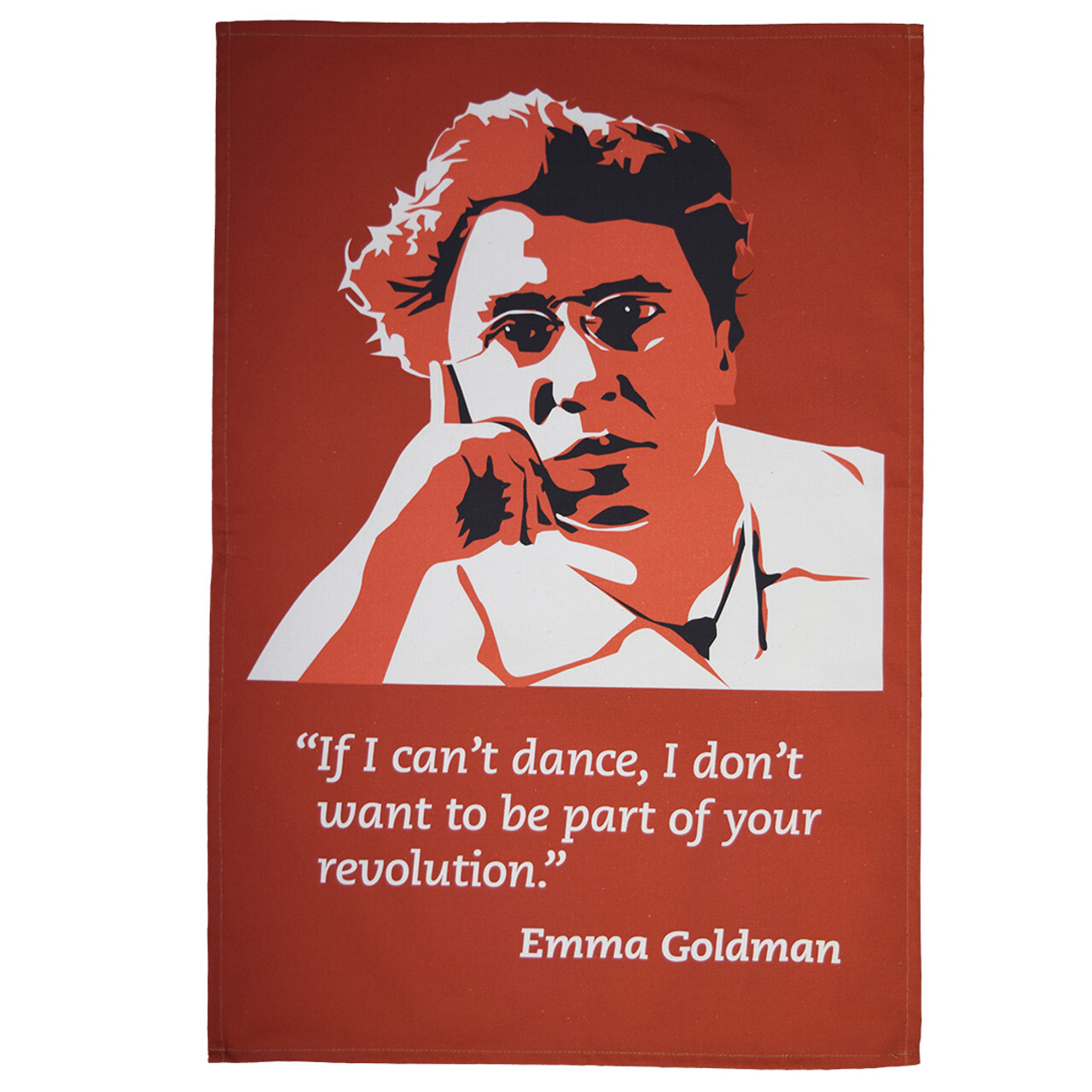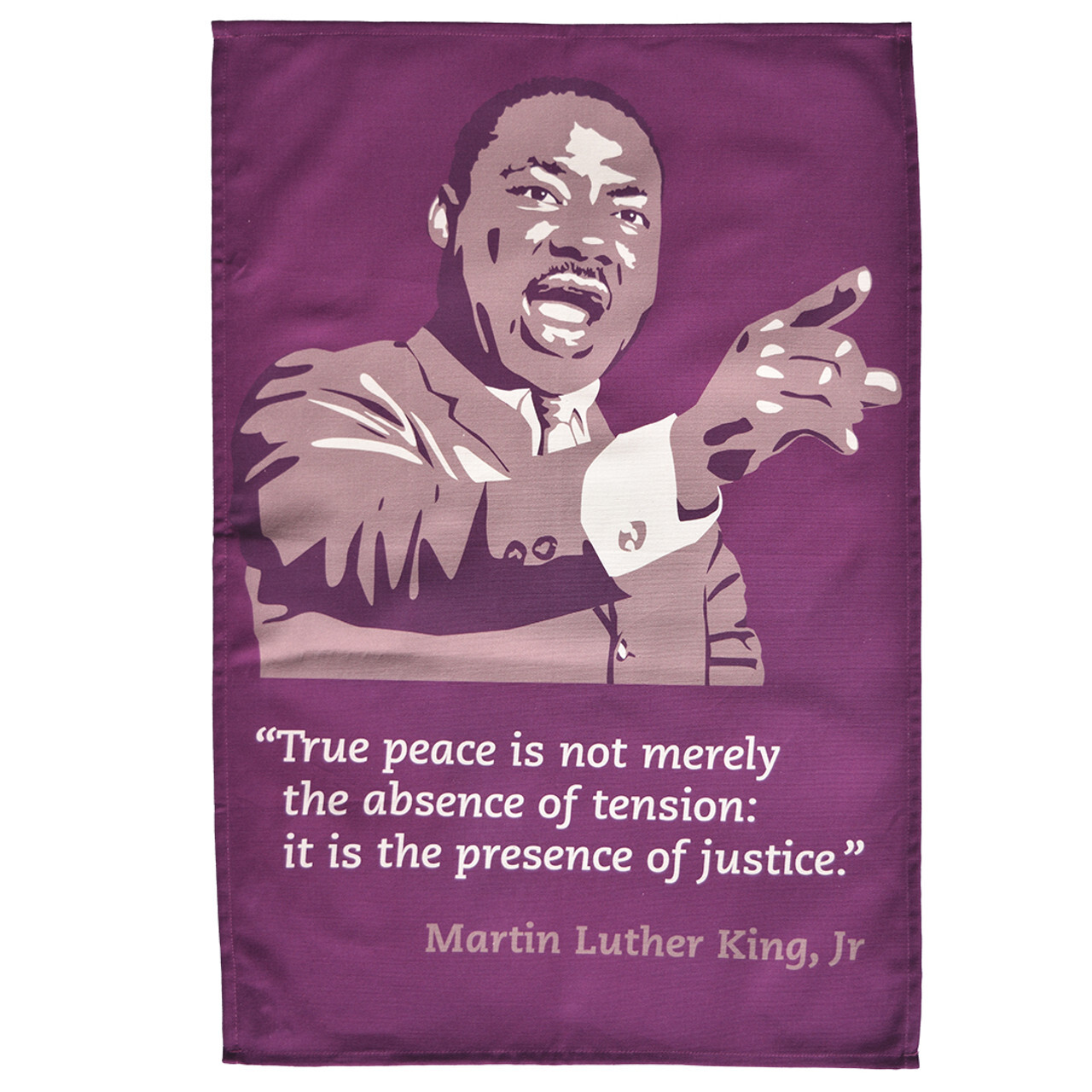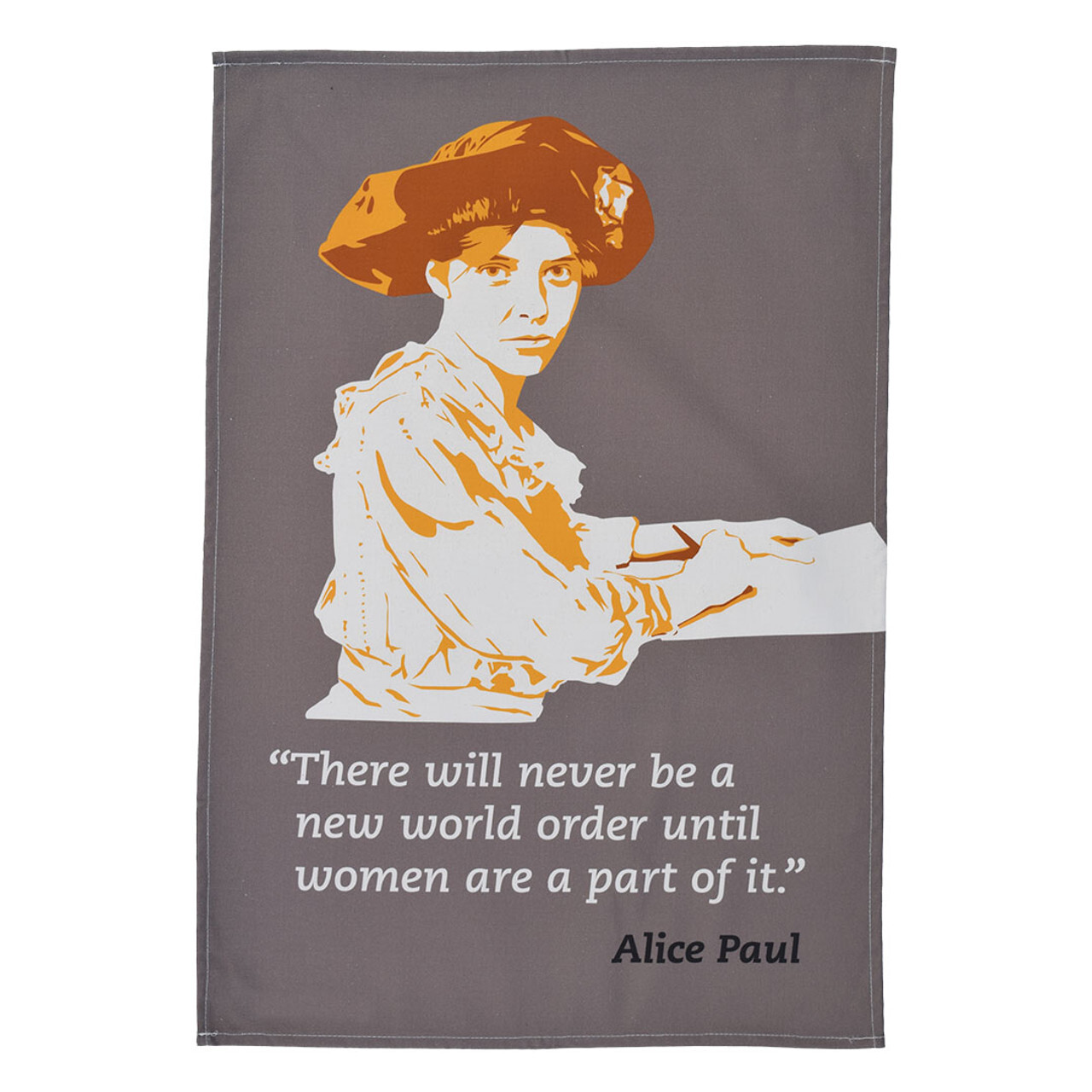We use cookies to make your shopping experience better. By using our website, you're agreeing to the collection of data as described in our Privacy Policy.
International Women's Day: Made in America!
The story of Therea Malkiel, who created the forerunner to the international annual celebration of women
International Women’s Day was created by the American socialist movement.
Theresa Malkiel (née Serber), an immigrant worker and labour organiser in New York, established a ‘National Woman’s Day’ in 1909.
Just a couple of years later it was adopted by the international socialist movement, too.
Malkiel was a remarkable activist but she still lacks the recognition she deserves.
Theresa Malkiel was a working class Jewish European woman, just like anarchist Emma Goldman, who arrived with her radicalism in the late 19th century US
See the Emma Goldman tea towel
Malkiel was born in what’s now Ukraine in 1874, then ruled by Tsarist Russia. Her family was Jewish and so had to flee the wave of racist pogroms in the Russian Empire at the end of the nineteenth century.
They arrived to New York’s Lower East Side in 1891 as de facto asylum seekers.
In New York, Malkiel joined the fast-growing ranks of the multiracial urban working class in the U.S. She started out as a garment worker at the age of 17.
But Malkiel wasn’t only going to work for the boss – she was going to organise for the workers.
Working-class Jewish-American women who’d migrated from Europe were a major source of labour radicalism in this period, drawing on their combined social experience as workers, women, a racial minority, and migrants, all at the same time.
Emma Goldman came out of this milieu, too, as did many of Malkiel’s fellow activists in the American socialist movement.
The textile industry was a vibrant source of unionism in the US, during Malkiel's time and into the 20th century
See the 1934 Textile Workers' Strike tea towel
In 1892, almost as soon as she immigrated, Malkiel helped create the Infant Cloakmaker’s Union of New York for the mostly Jewish women workforce of her garment factory.
Malkiel represented the union within larger labour groups including the Knights of Labor, the Central Labor Federation, and the United Hebrew Trades.
Socialism was widespread in these organisations and Malkiel quickly embraced the cause herself.
In 1893 she joined the Socialist Labor Party (SLP) before switching to the Socialist Party of America (SPA) a few years later.
The socialist movement in America during these years was a vibrant space, including activists like Eugene Debs and the Irish republican, James Connolly.
But it was also a space of contradictions, especially on gender and race. And Malkiel was ready to point them out.
The American socialist movement of the late 19th century lacked the moral compass of the later Civil Rights movement
See the Martin Luther King tea towel
These contradictions were undermining the socialist movement’s capacity to mobilise the American working class as a whole, in all of its inner complexity.
In 1911, during a speaking tour of the U.S. South, Malkiel was shocked to learn that the SPA complied with Jim Crow in the region.
"Lord preserve us from this kind of socialists..."
Defying the party line she went outside the segregated meeting hall that she was supposed to speak at in Mississippi to speak to thousands of black party members in the pouring rain.
And Malkiel also fought for women’s liberation within and through the socialist movement.
Although the SPA was formally committed to gender equality it made few efforts to practically reach out to women workers, despite their huge potential for socialist struggle.
In 1909, Malkiel wrote in the essay “Where do we stand on the woman question?”:
"For the workingwoman of today finds herself between two fires—on the one hand, she faces the capitalist class, her bitterest enemy... In her anguish the workingwoman turns towards her brothers in the hope to find a strong support in their midst, but she is doomed to be disillusioned, for they discourage her activity and are utterly listless towards the outcome of her struggle."
Malkiel agitated within the party for women’s liberation, creating women’s sections, working closely with women’s labour unions, and helping to theorise a specifically feminist socialism.
She also built bridges with the mainstream women’s suffrage movement in the U.S. while maintaining the socialists’ critique of its compromises with American capitalism.
In 1916 Malkiel toured the country campaigning for suffrage, and in 1920 she narrowly missed out on winning a seat in the New York State Assembly for the SPA.
It was in the course of Malkiel’s activism in the U.S. that she created the forerunner of International Women’s Day.
Feminist Alice Paul was a contemporary of Malkiel, though she campaigned for the National Women's Party rather than the Socialist Party of America
On 28 February 1909, as head of the Woman’s National Committee of the Socialist Party, Malkiel launched a ‘National Women’s Day’ in the U.S. to serve as a focal point for feminist and socialist activism in the country.
The idea was quickly taken up by European socialists in the Second International, including Rosa Luxemburg’s close collaborator, Clara Zetkin, although they moved it down the calendar into March.
From there, the now international women’s day spread like wildfire across the socialist world.
Socialist-feminist internationalism: Made in America!
Browse Suffragist and Suffragette tea towels







